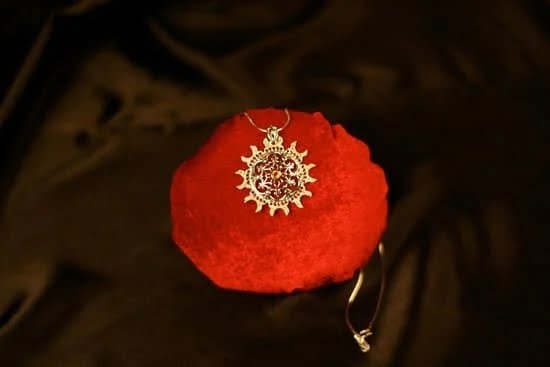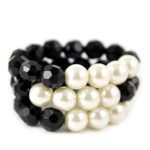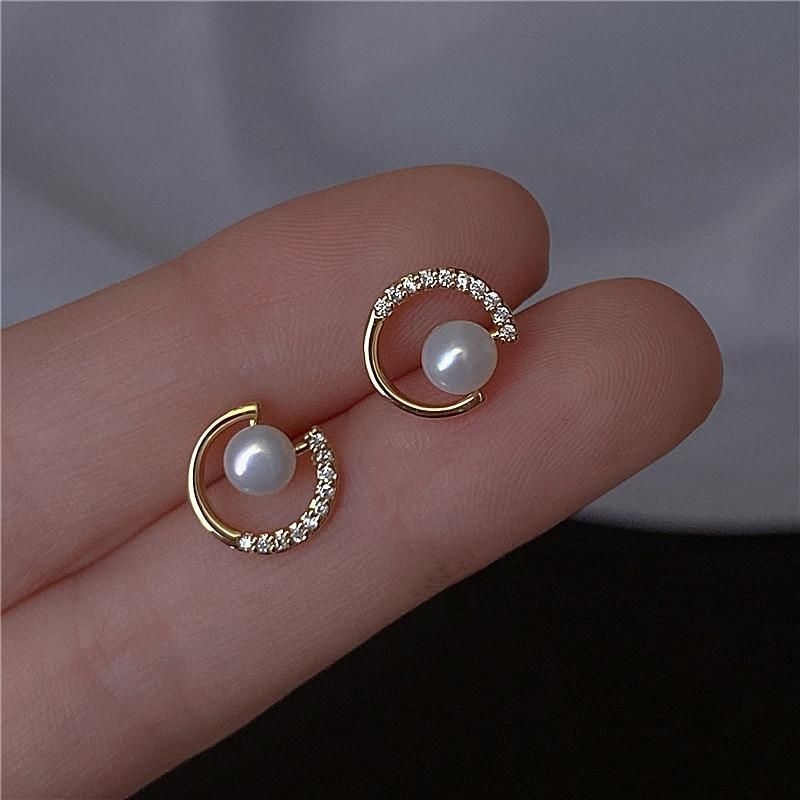Introduction
Pot metal jewelry, also known as white metal or pewter jewelry, is costume jewelry made from an alloy of zinc and other base metals, such as aluminum, lead, cobalt, nickel and tin. Depending on the alloy blend used to create the pot metal jewelry, the cost of production can be relatively low compared to other metals used in costume jewelry.
Advantages: Pot metal jewelry has several advantages that make it an attractive material for companies to use. The most notable advantage is that it is very low in cost to produce due to its inexpensive alloy blend. Plus it is easy to mold and shape into desired pieces; this combined with its low cost nature makes pot metal a popular choice for producing costume jewelry economically. Furthermore, pot metal jewelry often has a nice shiny finish which lends itself well to designs that require high levels of detail or intricate designs.
Disadvantages: Pot metal however does have some disadvantages as well. It is much softer than other metals such as sterling silver so items made may be more likely to scratch or wear over time than those made of other materials. Additionally, because pot metal contains Zinc, more care must be taken when cleaning and storing items made from this material in order prevent oxidization from occurring over time which can degrade its appearance significantly. Finally, since the longevity of pot metal items varies depending on how they were created and what chemicals were used during production there’s no way to guarantee how long any particular item will last before wearing out or needing repair work done due to the softness of the material itself.
Historical Development of Pot Metal Jewelry
Pot metal jewelry is a type of alloy-based material that was historically used in jewelry and decorative items during the 19th and 20th centuries due to its relatively low cost of production. It is sometimes known by the generic name ‘white metal’, or ‘spelter’. Pot metal jewelry is composed of a zinc or aluminum based alloy, certain other metals, and often contains lead.
The historical development of pot metal jewelry dates back to the 19th century when manufacturers began exploring cheaper materials for their products. Such corporations as Folkenberg-Brosack & Co., which specialized in costume jewelry production in Germany, were among the first to produce and market this kind of product. By the turn of 20th century, pot-metal was used extensively in many items such as pocket watches, costume and fashion bracelets, trinket boxes, belt buckles and many more.
The popularity of pot metal jewelry continued through the early 20th century during World War I era where this particular material became even more popular due to economical constraints imposed by wars. This period also gave birth to a few notable brands such as Nuvo Jewelry Company who are mostly remembered for their crude but charmingly quirky designs made with figures from popular culture at the time.
Key Design and Manufacturing Elements of Pot Metal Jewelry
Pot metal jewelry is a collectible and wearable form of jewelry, known for its affordability and variety of colors. It originated in the United States decades ago when zinc, aluminum, or lead were mixed with other alloys to create “pot metals.” These metals were usually very inexpensive, making them highly accessible for both the manufacturing process and for consumers.
The design and manufacturing elements of pot metal jewelry are quite distinctive. The unique colors attributed to pot metal, such as copper and bronze hues, as well as various shades of gold and silver alloys, give it an appeal that has yet to be matched by contemporary designs. Furthermore, the malleability of these metals allows jewelers to design intricate patterns that wouldn’t be possible with more durable materials such as stainless steel or titanium. Plus, since these metals do not show much wear over time they can make pieces last much longer than those made with more expensive materials. Finally, because these “pot metals” are relatively inexpensive compared to other types of metals used in jewelry-making processes, they can make certain styles of jewelry”such as costume jewelry”more affordable for people who would not normally be able to afford high-end pieces.
Valuation of Pot Metal Jewelry
Pot metal jewelry, also known as “guttersnipe jewelry,” is a type of costume jewelry made from an inexpensive and malleable alloy. The alloy used in pot metal jewelry typically contains a combination of zinc, copper, lead, cobalt, nickel, and antimony. These metals were melted together to form one solid piece and then cast into several shapes such as rings, brooches, earrings, bracelets and more. Pot metal can range in color from light gold to silver and even black; however the quality of the finished product was often lacking due to the low-grade quality of the metals used.
The valuation of pot metal jewelry is a tricky matter since age does not always equate to increased value for these pieces. Depending on their condition and desirability amongst collectors, pot metal items can fetch anywhere between five and fifty US dollars at auction or from an antique dealer. The style usually plays an important role in determining worth since some designs are rarer than others; however the overall appearance of each piece should also be taken into consideration when setting a price for antique pot metal jewelry. It is important to remember that rarity does not always equal high value with these pieces since collectors don’t necessary pay more for rare pot metal items if they are still in relatively poor condition.
Identification of Authentic Pot Metal Jewelry
Pot metal jewelry is a type of jewelry made out of an inexpensive alloy of metals that were melted together and cast into a number of different shapes or molds. It has been used since at least the Victorian era to create pieces such as brooches, pendants, lockets, earrings and bracelets. This type of alloy was chosen due to its workability, because it was good for casting and often less expensive than traditional precious metals.
To identify authentic pot metal jewelry pieces one must look at the metal itself. The metal should be yellow in color with a bronze or coppery sheen. Though some pieces may contain other metals in the alloy combination, most genuine pot metal pieces will contain either zinc or lead as part of their composition. Further identification requires testing for content components and confirming authenticity through scientific investigation such as X-ray fluorescence, mass spectrometry or optically assisted light analysis. Testing for volatility can be done and for composition determination; it may be necessary to destroy a portion of a piece for this process and conducting elemental compositional analysis on the sample by atomic absorption spectroscopy or X-ray diffraction analysis is possible. These tests will conclusively determine the main elements and any trace elements present in the metal which can then be compared to manufacturers specifications to confirm authenticity.
Best Practices for Caring for Pot Metal Jewelry
Pot metal jewelry is a type of costume jewelry made of relatively low-grade metals that are cheap and easy to mold into various shapes. It consists primarily of zinc and white lead, but may include tin, cadmium, and other metals as well. It was invented in the late 19th century by the pottery industry to create inexpensive decorations for their products.
Those who own or wear pot metal jewelry need to take certain steps in caring for it correctly; doing so will help keep the piece looking its best for years. One such measure is being careful when cleaning it – only use gentle cleaners designed specifically for jewelry, and do not submerge it in water. Additionally, store it away from any moisture – even small amounts of sweat can cause tarnishing over time! Finally, avoid harsh chemicals that could strip the metal or damage gems (if present). For extra protection against patina or corrosion, apply a thin layer of protective wax yearly. With proper care and maintenance, pot metal jewelry will be sure to look its best season after season!
Examples of Iconic and Contemporary Pot Metal Jewelry Designs
Pot metal jewelry is a type of jewelry that is composed of inexpensive, low-quality alloys. These alloys are made of different kinds of metals such as zinc, lead, and copper. The base metals in this mixture produce an alloy that is less brittle than other kinds of metals which creates the perfect material for making inexpensive jewelry.
The term “pot metal” was commonly used in the early twentieth century due to the fact that the alloys were melted down in a large pot or ladle and then poured into molds to create unique shapes and designs. Pot metal proved to be great for cheaper costume design jewelry production due to its flexibility and resistance against wear, tear, and discoloration over time.
Examples of iconic pot metal jewelry designs include classic pieces from brands such as Trifari and Coro who dominated the market with mass-produced common designs with an Art Deco influence such as rhinestone necklaces or natural gemstones adorned with marcasite items. Contemporary pot metal designs incorporate modern elements alongside timeless styles. Many contemporary designers play around with textures, colors, and settings to give their pieces a unique twist while retaining the signature look associated with pot metal jewelry.
Conclusion
Pot metal jewelry, also known as white metal or casting metal, is a type of jewelry made from alloys featuring a variety of compositions but predominantly containing Zinc as the main ingredient. This type of jewelry is usually more affordable than fine metals such as 14k gold and sterling silver. Despite affordability, there are both pros and cons associated with pot metal to consider for both jeweler makers and consumers.
One of the main advantages of using pot metal for jewelry makers is that it’s much easier to cast in comparison to gold and silver, allowing them to create intricate designs in much less time than other metals. Pot metal also has a unique ‘antique’ look which some people find appealing. For consumers, they can get antique looking pieces at a fraction of the cost without sacrificing on quality if they buy from reliable sources.
However, one of the major drawbacks associated with pot metal is its lower strength and durability compared to other types of metals used for making jewelry. Items made from pot metal are prone to cracking or breaking if not handled carefully, potentially leading to customer dissatisfaction. Additionally, when exposed to air for prolonged periods of time, pot metals tend to tarnish which negatively affects its overall appearance. Taking this into consideration before purchasing can help ensure an enjoyable buying experience with satisfactory results.

Welcome to my jewelry blog! My name is Sarah and I am the owner of this blog.
I love making jewelry and sharing my creations with others.
So whether you’re someone who loves wearing jewelry yourself or simply enjoys learning about it, be sure to check out my blog for insightful posts on everything related to this exciting topic!





